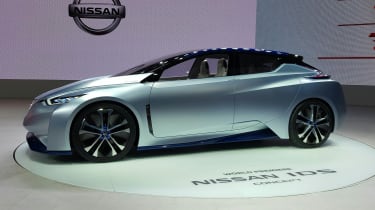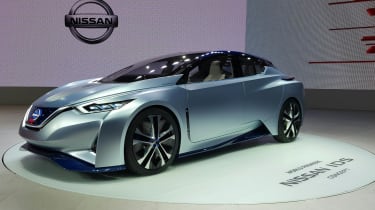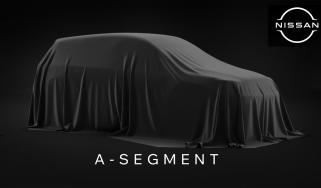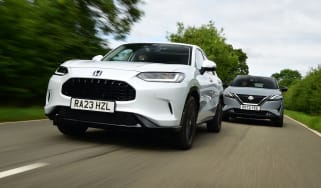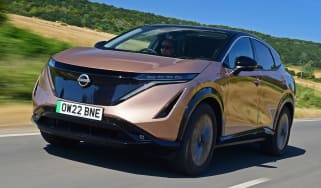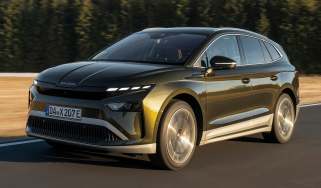Nissan reveals IDS autonomous EV concept at Tokyo 2015
Self-driving Nissan IDS autonomous electric vehicle concept hints heavily at future Nissan Leaf
The Nissan IDS autonomous electric vehicle concept has been unveiled at the 2015 Tokyo Motor Show, showing the Japanese brand’s future design, as well as cutting edge tech we can expect to see on the road in the next five years.
Back in 2013 Nissan CEO Carlos Ghosn laid down a marker, stating that by 2020 the firm would have a fully autonomous car in its model range – and with the IDS concept shown at Tokyo 2015, we’re one step closer to seeing this in production.
Standing for Nissan Intelligent Driving, the IDS concept uses advanced artificial intelligence to learn different driving styles and adapt to road conditions. In Piloted Drive autonomous mode, the software imitates the driver’s own style – from accelerating to braking and cornering – using information on road conditions fed back from an array of sensors and cameras.
Nissan says the AI software also “communicates like an attentive partner.” That means it can call up information on traffic as well as your daily schedule using on board connectivity, improving safety and comfort on the move.
Technology
Piloted Drive mode is switchable, so the driver can still take full control in the Manual setting. However, with the cameras, lasers and radar sensors always running, technology in the IDS will offer a constant safety net, intervening in a dangerous situation to help take evasive action.
With more than 90 per cent of accidents on the road caused by human error, Nissan claims tech in the IDS concept will help reduce injuries from crashes – part of its “two zeros” promise to target zero traffic fatalities and zero emissions in the future.
The electric IDS Concept features a 60kWh battery pack (twice as much as the newly updated Leaf) and a full carbon fibre body. Together with Nissan’s latest styling language that combines a sportier look with an aerodynamic profile, the IDS should boast a usable range similar to a petrol-powered family hatchback, but with 0g/km CO2 emissions.
On top of this there’s a Piloted Park function than works from a smartphone or tablet, while the electric concept can also recharge wirelessly.
Design
The IDS is just 1,380mm tall (a Ford Fiesta is 1,495mm tall by comparison), so the low roofline helps aerodynamic efficiency and boosts design.
With a V-shaped grille, an evolution of Nissan’s trademark boomerang headlights and taillights, and a rising waistline, there are hints of the Qashqai crossover’s overall look in the IDS – but as with the firm’s previous Sway and Gripz concepts, expect to see this design language feature on Nissans of the future.
The silver body line on the car’s exterior is actually an LED that changes colour to show the car is aware of a pedestrian or cyclist, for example. There’s also an electronic display, which can show other road users messages, such as “after you” to pedestrians.
The IDS’ interior is just as interesting, with the concept boasting two different layouts depending on the driving mode selected, reinforcing the difference between Manual and Piloted driving.
The four-seat cabin is more spacious in autonomous mode, as the steering wheel retracts into the dash, with a flat screen display emerging. Occupants can control various functions using different gestures, while the seats all slightly rotate inwards to create what Nissan calls a “living room atmosphere.”
In Manual mode the cabin layout is more conventional, with the lighting switching to blue and a more driver-focused readout on showy. A switch in between the front seats – called the PD Commander – flicks between the two modes.
Read all the latest news from the 2015 Tokyo Motor Show here.
Find a car with the experts


